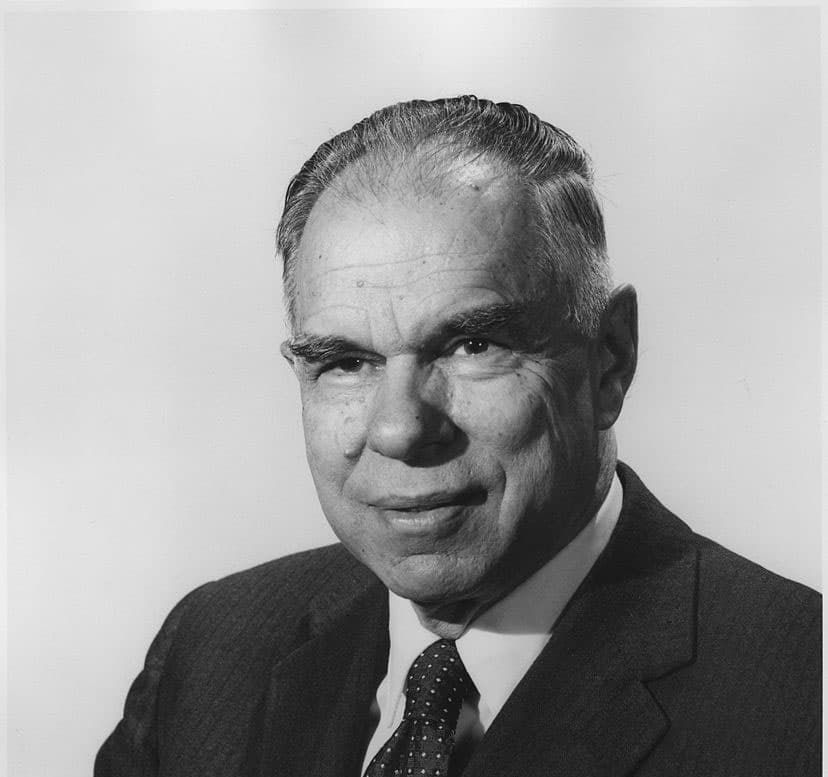The long-term problem of “peaceful” plutonium
By Robert Alvarez | March 8, 2021
 Glenn T. Seaborg, atomic pioneer and commissioner of the Atomic Energy Commission, ca. 1964. Energy Department photo.
Glenn T. Seaborg, atomic pioneer and commissioner of the Atomic Energy Commission, ca. 1964. Energy Department photo.
In the early decades of the atomic age, using the enormous energy in plutonium atoms for the peaceful generation of electricity became a multibillion-dollar quest that shaped US energy research and development policies. In 1970, Glenn Seaborg, the discoverer of plutonium and then-chairman of the US Atomic Energy Commission, declared that “within the lifespan of a single generation this newcomer plutonium born on a humble research budget and cradled in a cigar box will have become the energy giant of the future.”
Seaborg and the AEC projected the growth of nuclear-powered electricity would be so great that global supplies of uranium would be exhausted, paving the way for the recovery of plutonium from spent power reactor fuel for the next generation of power plants, which would dot the global landscape. Seaborg estimated by the end of the 20th century, power reactors would cumulatively produce 1,600 metric tons of plutonium with the potential to fuel half the nation’s electrical generation.
With this much plutonium flowing through commerce, the possibility that some of it might be diverted for nefarious purposes was not lost on prominent members of the US national security establishment. Losing track of just .0003 percent of the amount estimated by Seaborg would be enough to fuel a Nakasaki-sized nuclear weapon. Opposition by America’s Cold War nuclear policy makers was galvanized following India’s nuclear weapons test in May 1974. India’s bomb was fueled with plutonium produced from “peaceful atom” technology provided by the United States and Canada. Albert Wohlstetter, a prominent American nuclear strategist and cold warrior, concluded that the U.S. pursuit of plutonium fuel could result in “life in an armed nuclear crowd
In response to the Indian test, the Carter administration banned chemical separation of plutonium from irradiated power reactor fuel—the process known as reprocessing—in 1977.
The US “plutonium economy” was also dealt a major blow by the 1982 Nuclear Waste Policy Act, which underscored the Carter Administration’s non-proliferation goals by giving priority to the direct geologic disposal of spent nuclear fuel, without reprocessing. President Reagan lifted the ban and President George W. Bush attempted to revive reprocessing, but those efforts collapsed in the United States under the weight of the expense, safety problems, and security risks of a widespread reprocessing program. Since the early 1980s, the US Congress has shown little appetite for resuming support of the commercial development of plutonium as a reactor fuel.
As of the end of 2018, US spent power reactor fuel contained about 824 metric tons of plutonium—the world’s largest single inventory of that element. The intense radiation of used nuclear fuel assemblies makes them essentially impervious to theft or diversion to weapons use. But after 300 years, a great deal of the radiation barrier protecting them will have decayed. The Nuclear Waste Policy Act lays out a process for geologically directly disposing of spent nuclear power fuel in an underground repository, rather than allowing plutonium to be separated from it. Reprocessing “would incur a substantial cost penalty,” concluded an industry study in 2006 and would be far more costly more expensive than direct spent nuclear fuel disposal. “[Re]processing would have to be accompanied by deployment of fast reactor plants. But demonstration fast reactor plants to-date has mostly proved expensive and unreliable, which aggravates [re]processing’s economic handicap.”
But nearly 40 years later, geologic disposal of spent power reactor fuel remains uncertain after President Obama’s cancellation in 2010 of the proposed Yucca Mountain repository site in Nevada.
By the mid-21st century, the amount of plutonium in spent power reactor fuel could grow to more than 1,400 metric tons. The 300-year clock measuring off the time until the radiation barrier diminishes to the point that this vast amount of weapons-usable plutonium can be readily obtained is still ticking.
Together, we make the world safer.
The Bulletin elevates expert voices above the noise. But as an independent nonprofit organization, our operations depend on the support of readers like you. Help us continue to deliver quality journalism that holds leaders accountable. Your support of our work at any level is important. In return, we promise our coverage will be understandable, influential, vigilant, solution-oriented, and fair-minded. Together we can make a difference.
Keywords: civilian nuclear power, nuclear reprocessing, plutonium
Topics: Nuclear Risk
















Another plutonium freakout article. Nothing is said here about the fact that spent fuel from lightwater reactors contains various plutonium isotopes that make that plutonium useless for atomic weapons, even if one were to separate it from the rest of the elements in the spent fuel. Nor does it acknowledge that the integral fast reactor project created a fuel recycling system that never creates weapons-usable material. And on top of all that, we’re supposed to be afraid of what’ll happen in 300 years when the spent fuel is less radioactive than now? Nuclear power is the only technology that will… Read more »
and what of these nuclear accidents, Chernobyl, Fukushima, they do not go away. Go and visit these places, as I have, perhaps you’ll have a different idea of the far reach of the peaceful atom.
Nuclear energy is so expensive that it is irrelevant. New nuclear energy is costing around 21¢ for generation plus the standard 6¢ non-generation cost. See my article at https://az4cc.org/new-nuclear-energy-plants-are-a-fools-errand/ to see how this actually causes more fossil fuels to be burned because of this, as economists say, “opportunity cost” issue.
Additionally, the comment that after 300 years spent fuel will be less radioactive is disingenuous. The issue here is plutonium-239. This has a 24 thousand half life. After 300 years, there will barely be a difference in its potency.
It’s always illuminating to hear from the great Bob Alvarez. The advocates of nuclear power studiously avoid the reality that no new ones—small or large—can come on line in the US for at least a decade. That they emit radioactive Carbon. That they emit greenhouse gases in the mining, milling, enrichment and storage process. That they are completely non-competitive with renewables, and getting moreso. And, of course, that they produce plutonium. Who among them will personally ensure any of the 93/4 licensed reactors in the US? And where is Oliver Stone to debate the issue? Thanks once again, Bob, for… Read more »